

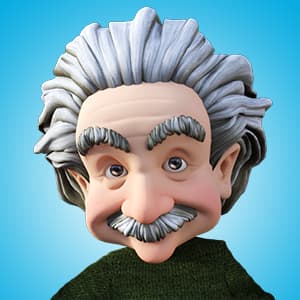
Language:

Follow Me:
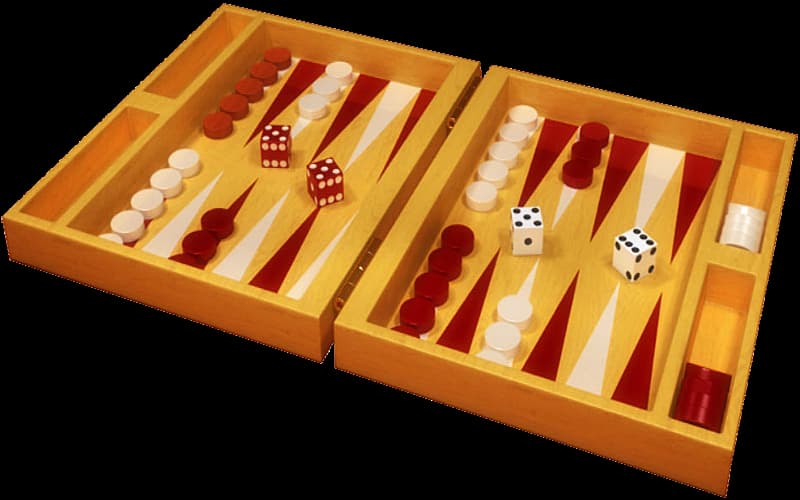
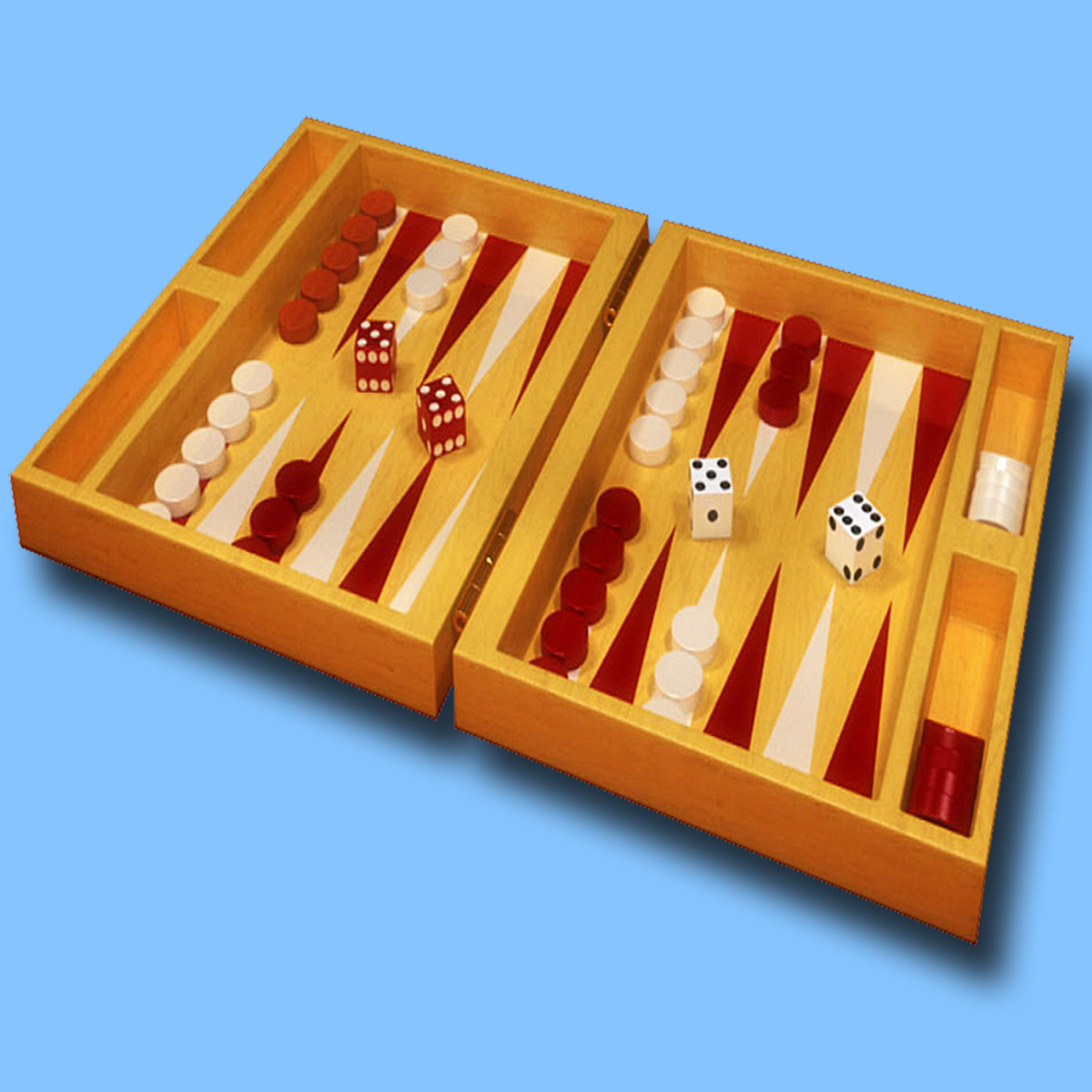
Backgammon is one of the oldest and most fascinating board games, with a 5000 year known history. Here you can play Backgammon online against the computer AI or versus a friend.
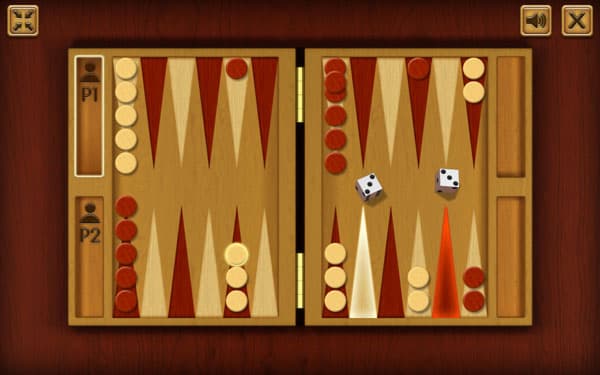
This game opens as a regular web page. There is no sign-in required, and the game works on mobile devices, tablets and desktop PC. The game has a low difficulty level and is suited for beginners.
Play BACKGAMMON:


Backgammon is a tabletop board game for two players. The aim of the game is to be the first one to remove all your 15 disc-shaped game pieces from the playfield, by maneuvering them step by step around the board to the last position.
While moving your pieces, you can do all kinds of strategic maneuvers to make it difficult for your opponent and easier for yourself.
The players roll dice to move their pieces in opposite direction of each other, and both have the opportunity to obstruct the opponents progress when their pieces meet along the way.
There is some luck involved from rolling the dice, but the player that displays superior skill and tactics will win by choosing the best moves and by anticipating the opponent’s counter-moves.
A quick introduction to playing Backgammon for beginners:
The Backgammon board has 24 long triangles, called “points” (12 on each side in red/white). The points are numbered from 1 to 24.
In the illustration below, the Backgammon board is viewed from the white player’s side (your side), and the points (long triangles) are marked with their values from 1-24:
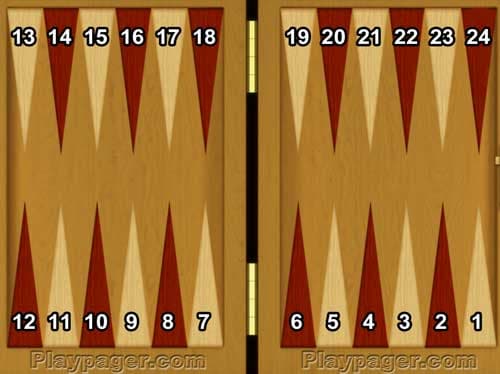
Fig.1 How to play backgammon: The backgammon board with points marked.
The objective of the game is to move your pieces (small discs often called “checkers” or “chips”) around the board in the direction of the arrows shown in the illustration below, from the 24-point triangle to the 1-point triangle, and then off the board completely (remove them). The first player to move all his/her checkers off the board, is the winner of the game.
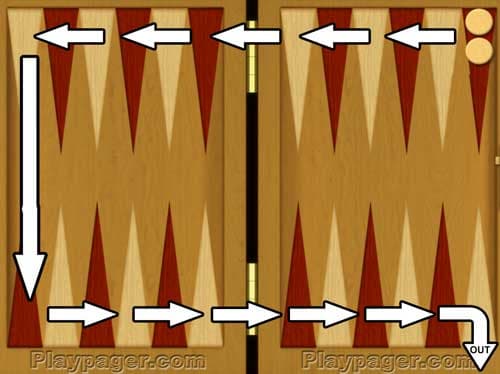
Fig.2 How to play backgammon: The movement of your pieces.
BUT you cannot start moving your checkers off the board until ALL your checkers are gathered in your “HOME BOARD”:
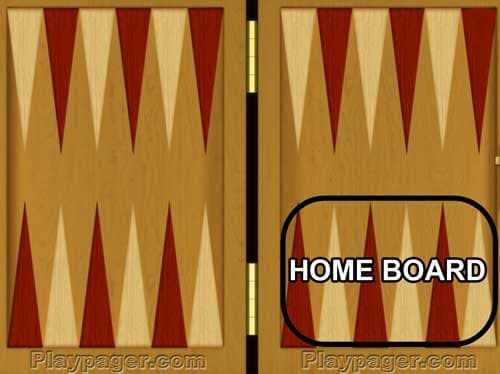
Fig.3 How to play backgammon: The home board (also called The inner board).
As shown in the illustration, the points 1 through 6 constitute your HOME BOARD (also called “inner board”). Other parts of the board also have names: The points 7 through 12 constitute your “outer board”, the 7-point is called “the bar point”, and the 13-point is called “the midpoint”.
Each player starts with 15 checkers placed on the Backgammon board as shown in the illustration below. As you can see, you do not start with all your white checkers placed at the 24-point triangle as you might expect. At the start of the game, all your checkers are placed in a determined pattern across the board as follows: Five on the 6-point, 3 on the 8-point, 5 on the 13-point and 2 on the-24 point. Your opponent’s pieces (Red pieces in this online game) will mirror yours, as he sits on the opposite side of the board, and the points on the triangles goes in the opposite direction for him. He will move his checkers in the opposite direction of yours, so his 24-point is the same as your 1-point triangle.
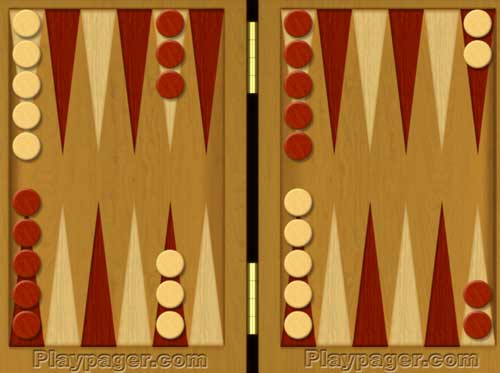
Fig.4 Backgammon setup: The starting positions

The game begins with each player rolling one dice. The player with the higher number rolled gets to use both dice for the first move.
Each checker is moved separately and can be moved to any point that is not BLOCKED:
When your opponent has two or more checkers on a point, then that point is blocked. (If the point has your own checkers, no checkers, or only one opponent checker, then that point is not blocked, or open.)
A player who rolls two of a kind (both dices show the same number) gets to move double the numbers on the dice.
When moving the same checker with both dice numbers, the intermediate points must be open (not blocked). For example: if you roll a 3 and a 4, you can only move your checker 7 points if point 3 and 4 are not blocked.
A player who moves his checker to a point occupied by only one of the opponent’s checkers (called a “blot”), can “hit” (take) the opponent’s checker and place it on the bar in the middle of the board.
When this happens, the opponent is required to return that checker into the game before making any other moves. The checker must be entered back into the game via point 24.
If the checker is blocked from being returned into the game, no moves can be made, and the turn goes back to the other player.
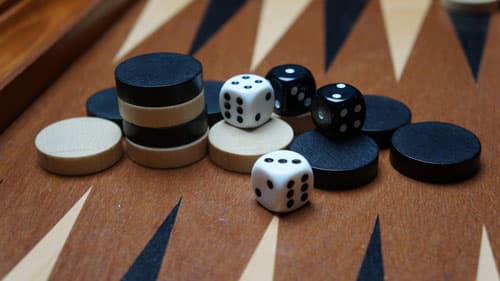
When you finally have moved all your checkers into your home board, you are able to begin removing them from the board by moving them past the 1-point. This is also known as “bearing off”.
The first player to remove all his/her checkers from the board wins the game.
But if one of your checkers is hit by your opponent and placed on the middle bar while you are bearing off, you must move that checker back into the game and all the way to your home board before you can continue removing
your checkers.
If a higher number is rolled than you have while bearing off, the farthest checker can be removed.
If a player has no checkers off the board when his opponent has removed all his checkers, it is known as a gammon and is worth a double game.
If a player still has a checker in his/her opponents home board or on the bar and the opponent has removed all his/her checkers, it is known as a backgammon and is worth a triple game.
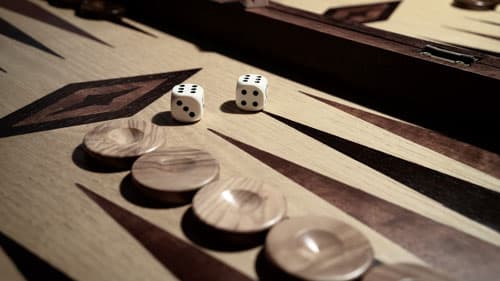
Learn more about this game on the Wikipedia Page
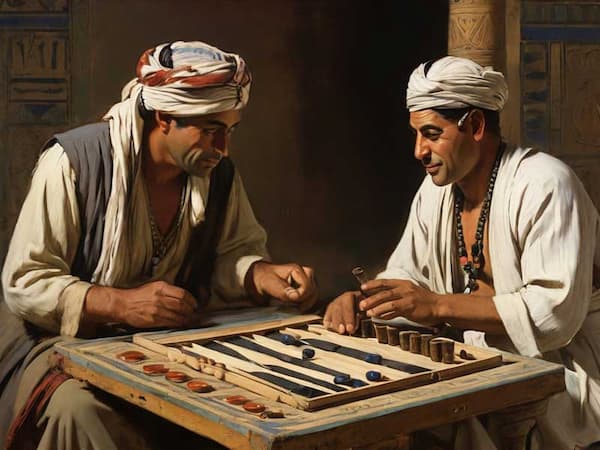
Backgammon’s origins can be traced back nearly 5,000 years to the ancient civilizations of Mesopotamia, particularly in Persia (modern-day Iran). Archaeological discoveries, such as the game of “The Royal Game of Ur” in ancient Sumeria (around 2600 BC) and similar games found in Egyptian tombs, indicate the presence of backgammon’s early ancestors.
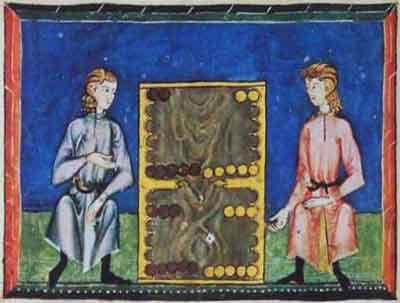
Backgammon from the “Libro de axedrez, dados e tablas” (“Book of chess, dice and tables”, 13th century)
The game evolved over centuries, with variations appearing in different cultures. In ancient Greece and Rome, it was known as “tabula” and “ludus duodecim scriptorum” (game of twelve lines) respectively. The Roman version was particularly popular, and it’s thought that this is where the game began to take a form closer to the modern version.
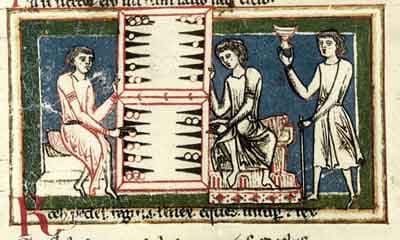
Backgammon from the “Carmina Burana” (“Songs from Benediktbeuern”, 11th – 13th century)
During the Middle Ages, the game spread across Europe and the Middle East. It was known as “tables” in England and enjoyed popularity among all social classes. The game underwent further refinement in Europe, and by the 17th century, it started to resemble the modern game.
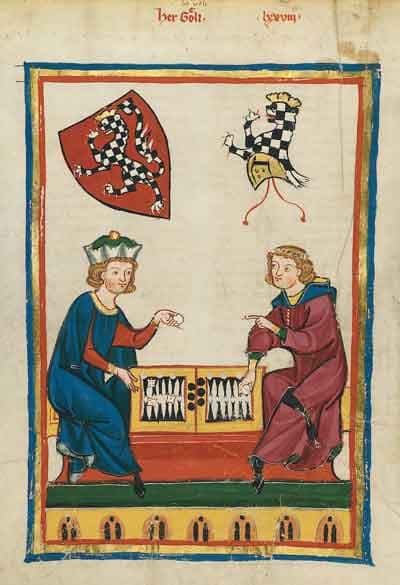
Backgammon from the “Codex Manesse” (book of songs/poetry, 1304-1340)
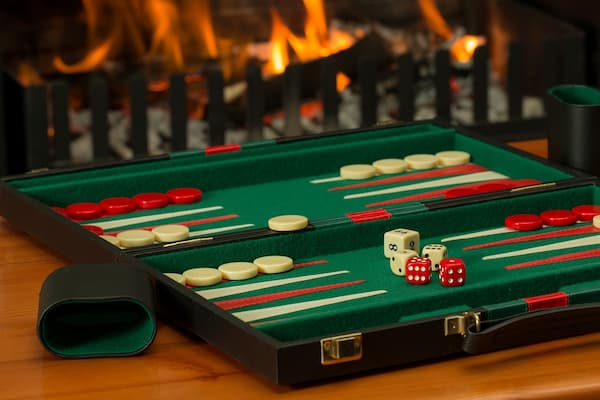
The biggest transformation for backgammon came in the 1920s in the United States with the addition of the doubling cube, which introduced a gambling element to the game. This innovation increased the game’s complexity and strategic depth.

Playpager's Backgammon is a H5 web game programmed in html5/Js. You can play against the built-in computer player, 'Albert the AI', or against a friend in 2-player mode.
A brief presentation:

